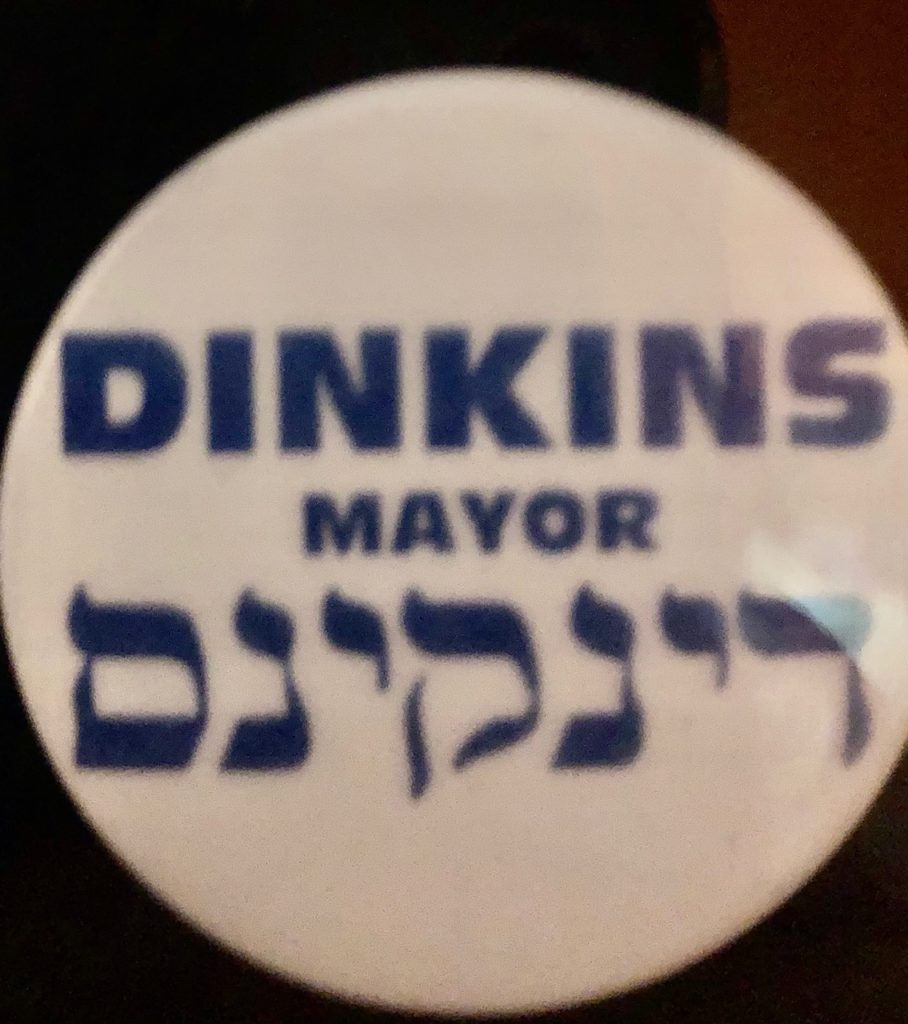
Two of New York City’s former Mayors died this week. One committed suicide on national TV, melting before our very eyes. The other, the first and only Black Mayor in NYC’s 350+ year history, died a peaceful death, in the privacy of his own home. Both deaths reflected how the Mayors lived their lives.
Rudy Giuliani, the White Supremacist beaten by David Dinkins for the Mayoralty in 1989, during a period of rising racial unrest in NYC, died by his own tormented tongue and hands, choking on his own words as if they were poison pills, in front of millions of viewers. For many of us who have had a front-row seat to witness Rudy the Racist’s rise and fall over the decades, it reminded us of the way he announced he was divorcing his second wife, Donna Hanover — at an unhinged press conference, alone.
David Dinkins, in compelling contrast, a genuinely kind man of great dignity and grace, went gently into the night at age 93, one month after the death of his beloved partner of 67 years, Joyce Burrows Dinkins. Both were graduates of Howard University, the mecca for Black leadership in this country, with Justice Thurgood Marshall, VP-elect Kamala Harris, former Ambassador Andrew Young, writer Toni Morrison and actor Chadwick Boseman, as just a few examples.
Mayor Dinkins continually reminded us that he stood on the shoulders of giants, in the civil rights movement and beyond, who had sacrificed much for this country, and that he was a reflection of the “gorgeous mosaic” that was the diversity of New York. Conversely, by his every action, Rudy rudely reminded us that he stood on the bodies of people who got in the way of his ruthless ambition. Even after Giuliani defeated Dinkins in their 1993 Mayoral rematch, and Dinkins reached out as an act of reconciliation, following a blatantly racist campaign waged against the City’s first Black Mayor, Rudy refused to meet. Giuliani was already ginning up his shivel-souled, small-minded, mean and ghoulish behavior to become Donald Trump’s lawyer later in life, a high-profile position from which he plunged to his death.
During the tinderboxes of the heat of the summer of 1989 — the Central Park 5 arrests, and the Bensonhurst murder of Yusef Hawkins — it was David Dinkins who kept NYC from exploding as he crusaded for Mayor, calling for peace in a town ready to ignite into flames, with private citizen Trump trumpeting racial hate in full-page newspaper ads, and candidate Giuliani lighting matches from the sidelines.
Less than two weeks before the September Democratic Primary where Dinkins would handily beat Mayor Ed Koch for the right to run against Rudy in November, I accompanied Governor Mario M. Cuomo to the funeral of Yusef Hawkins, the 16-year-young Black man killed because of the color of his skin, while he went shopping for a used car in a heavily white, Italian section of Brooklyn.
We were among a light smattering of white faces in a crowd of thousands jamming the streets in front of the Glover Memorial Church on Dean Street in East New York, not far from where I was born. I stood among a group of mostly white reporters covering the funeral, finding an uneasy comfort in the presence of Louis Farakkhan’s bow-tied Muslim soldiers, who lined the streets in front of the church to keep some semblance of peace.
Mayor Koch emerged from his official City car to pay his respects and was pelted with a barrage of boos and screams so intense, I expected his presence to cause a riot. Dislike for Koch was visceral in East NY’s Black neighborhoods, but even Mario Cuomo, generally admired by Black leaders and communities across the City and State, was heckled as he entered Glover Memorial for the funeral service.
Cuomo had been sharply criticized the day before by Brooklyn-born movie director Spike Lee for not visiting Bensonhurst and “talking some sense out there to the Italians.” Lee’s film Do The Right Thing about racism in NYC came out earlier that summer, presaging the lethal price of prejudice. The street taunts toward Mario Cuomo reflected Lee’s sentiments.
Of all the public officials in attendance, only David Dinkins was greeted respectfully, foreshadowing his nine-point primary victory over Koch two weeks later. Dinkins, then the Manhattan Borough President, ran as a “healer” of the City’s simmering racial tensions. Two months later, Dinkins narrowly beat Giuliani for Mayor by some 47,000 votes, one of the closest mayoral elections in NYC’s history. Dinkins won with 90 percent of the Black vote citywide and 70 percent of the Latino vote, while Rudy ran away with the White vote, securing some 70 percent. In Bensonhurst, where Yusef Hawkins was murdered, Giuliani defeated Dinkins by a 10–1 margin.
David Dinkins’ calm, conciliatory manner was just what NY needed at that moment in it’s long, boisterous history. The morning after Dinkins election, I wore my “Dinkins for Mayor” button, with writing in Hebrew to pointedly bring people together, as I rode the E-Train down to the World Trade Center to my job. The feeling of joy and brotherhood, though fleeting, was palpable throughout the subway car. A few fellow commuters, several of them Black, exchanged high-fives with me.
David Dinkins’ quiet dignity rescued the City that day and for a short time into the new decade of the 1990’s. He didn’t have Mario Cuomo’s charisma, nor Giuliani’s ghoulishness, but, in his careful, considerate way, Dinkins showed us what the promise of the future could look like.
Rest in the very peace you sought all of your days, David. You deserve it.

